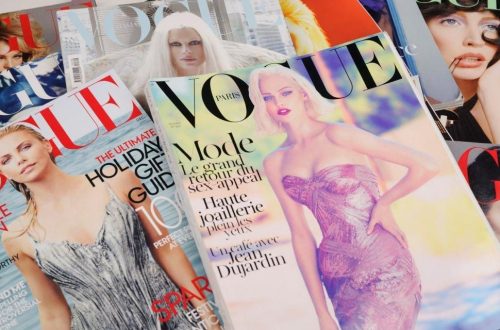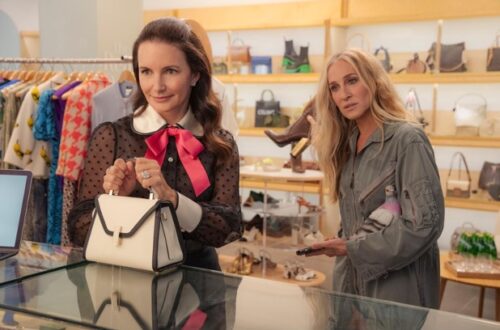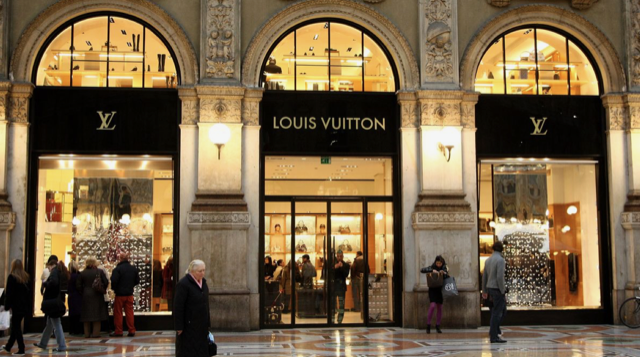
In the delicate ecosystem of luxury, a profound shift is underway, marking the industry’s inaugural deceleration since the pandemic’s tumult. This transformative period is drawing a distinct line between those flourishing and those floundering within the opulent sphere. Kering SA’s forewarning of dwindling profitability haunting its esteemed Gucci brand forecasts a bleak trajectory, ensnared by internal upheavals compounded by a global demand downturn. Yet, amidst this turbulence, Hermes International emerges as a beacon of resilience, besieged by a surplus of affluent clientele eagerly vying for its coveted $10,000 handbags, affording it a rare insulation from the prevailing economic winds. Meanwhile, the colossal LVMH Moet Hennessy Louis Vuitton SE, stewarding an array of prestigious labels, finds itself in a perplexing tussle as investor disappointment looms large, accentuated by subdued growth in pivotal sectors.
As the narrative of luxury unfolds, it’s evident that while Hermes and the ethos of quiet luxury bask in the radiance of success, counterparts like Kering and LVMH grapple with unnerving setbacks, unveiling the dichotomy shaping the luxury landscape. Amidst this dichotomy, a looming struggle among US aspirational customers, exacerbated by the burden of student loan repayments, adds a nuanced layer to the sector’s challenges, echoing the broader societal shifts influencing consumer behaviour and preferences in this volatile economic climate.
Q3 Earnings Paints an Image of Winners and Losers
In the wake of the Q3 2023 earnings announcements, the competitive landscape within the luxury sector delineates a stark narrative of winners and strugglers, prominently featuring Kering, LVMH, and Hermes. Kering SA faced a turbulent quarter as its flagship brand, Gucci, grappled with a 7% slide in comparable revenue, marking a deeper descent than analysts’ projected 6.2% decline. The Paris-based conglomerate witnessed a disconcerting 9% overall sales dip, further compounded by a 4.5% plunge in its shares during early Paris trading, culminating in a staggering 18% loss throughout the year.
Contrarily, LVMH Moet Hennessy Louis Vuitton SE, boasting 75 esteemed labels, disappointed investors as growth in its pivotal fashion and leather goods segment failed to meet estimates, paralleled by a 14% downturn in its wines and spirits division, influenced by weakened Cognac demand in the US. Despite a 9% rise in revenues, the conglomerate faced a slowdown compared to the previous quarter’s formidable 17% surge.
Conversely, Hermes International emerged triumphant, exhibiting a resplendent 16% surge in sales, surpassing analysts’ forecasts and elevating its shares by 3.3% in Paris. Hermes’ exceptional performance, especially in the US and Europe, where discerning shoppers indulged in the allure of its prized Birkin and Kelly bags, stands as a testament to its unmatched resilience in an industry marred by a general slowdown. Thomas Chauvet of Citigroup hailed Hermes as “in a league of their own,” underscoring its unique positioning and robust appeal among loyal, high-end demographics. Notably, Hermes’ market value of €181 billion ($193 billion) dwarfs that of Kering SA, further spotlighting the glaring discrepancy between the industry giants and the standout success of Hermes in this fiercely competitive luxury arena.
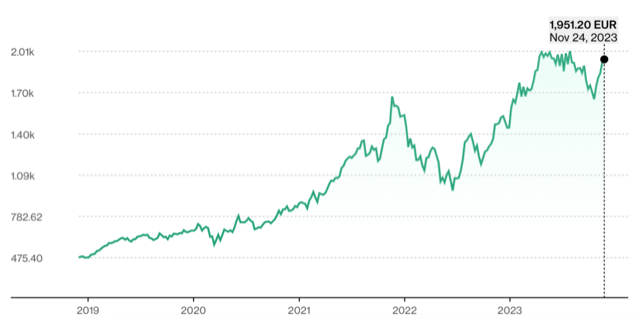
Hermes International SCA 5-Year Stock Performance (Source: Bloomberg) 
LVMH Moet Hennessy Louis Vuitton SE 5-Year Stock Performance (Source: Bloomberg) 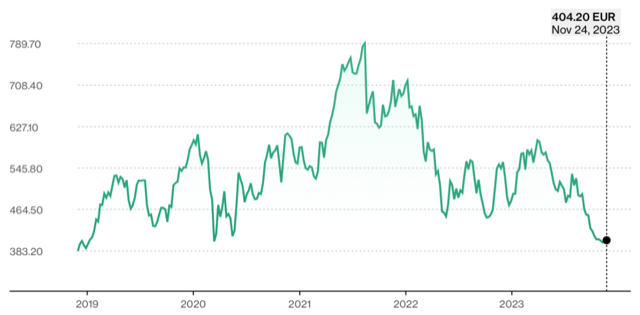
Kering SA 5-Year Stock Performance (Source: Bloomberg)
Financial Headwinds and Shifting Consumer Dynamics in US Luxury Markets
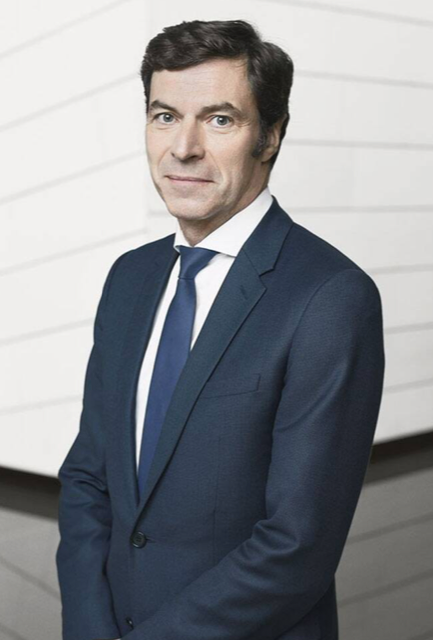
The anticipated challenges looming over the luxury sector, especially within the United States, appear poised to persist, compounded by the resurgence of student loan repayments and the evolving plight of the American aspirational consumer. The resumption of student loan payments in October 2023, after a three-year hiatus initiated amid the COVID pandemic, signals a significant drain on consumer spending in the US, estimated at a staggering $9 billion monthly or exceeding $100 billion annually, according to a report by Oxford Economics. With the average monthly repayment hovering around $400, a considerable segment of Americans faces a daunting task covering these expenses amid surging housing costs and inflated everyday expenditures.
The once-coveted American aspirational consumer, pivotal to the luxury conglomerates during the pandemic-driven surge, now grapples with economic uncertainties, burgeoning inflation, and depleting financial reserves. “The aspirational customer is suffering a bit,” LVMH CFO Jean-Jacques Guiony previously announced on the LVMH Q2 earnings call, following up on this message during Q3 results, declaring that the state of this customer has remained largely unchanged during the third quarter. This group, primarily comprising US shoppers earning less than $100,000, has witnessed a sobering shift in spending habits, prompting a re-evaluation of purchases and preferences. LVMH, among the foremost beneficiaries of this aspirational spending surge, acknowledged the evolving struggle of this demographic, citing lower sales both online and in second-tier cities. As economic uncertainty grows and cash reserves dwindle, the aspirational shopper, typically drawn to lower-priced luxury items like sunglasses and perfumes, faces mounting challenges, profoundly impacting the revenue streams of major luxury houses reliant on this segment’s patronage.
In a landscape fraught with challenges, the luxury sector stands at a crossroads—not defeated but beckoning for reinvention. The struggles of LVMH, Kering, and their counterparts serve as a clarion call for a reimagining of strategies and a re-evaluation of target demographics. As the decisive Q4 unfolds, heralding the iconic Black Friday and the festive Christmas shopping spree, the stakes for consumer goods companies, especially in the luxury realm, have never been higher.
Amidst this tumult, the notion of “excitingly boring” emerges as a beacon of guidance, urging luxury brands to embody consistency in values while infusing innovation in storytelling. The saga of enduring luxury houses like Hermes, Loro Piana, and Rolex epitomizes this approach, steadfastly adhering to their core while dynamically narrating their brand story. The recent Q3 figures, far from being a requiem for luxury, signal an awakening, a chance for these brands to pivot, reconnect with their essence, and captivate the discerning Gen Z audience through precise storytelling.
The imperative is clear: embrace the “excitingly boring” ethos, anchor in core values, and innovate relentlessly. As some brands grapple with the consequences of short-sighted strategies, the message resonates—a resounding call to fashion a new era where the evolution of luxury harmonizes with timeless values. It’s a transformative juncture, a time for luxury brands not to dwindle into oblivion but to propel the industry to unparalleled heights, defying the odds and sculpting a future where persistence meets reinvention, ensuring not survival, but ascension. It’s the dawning of a new chapter—a chapter where the shrewd and visionary script the trajectory of an industry poised for renaissance.
by Antonia Garwing



